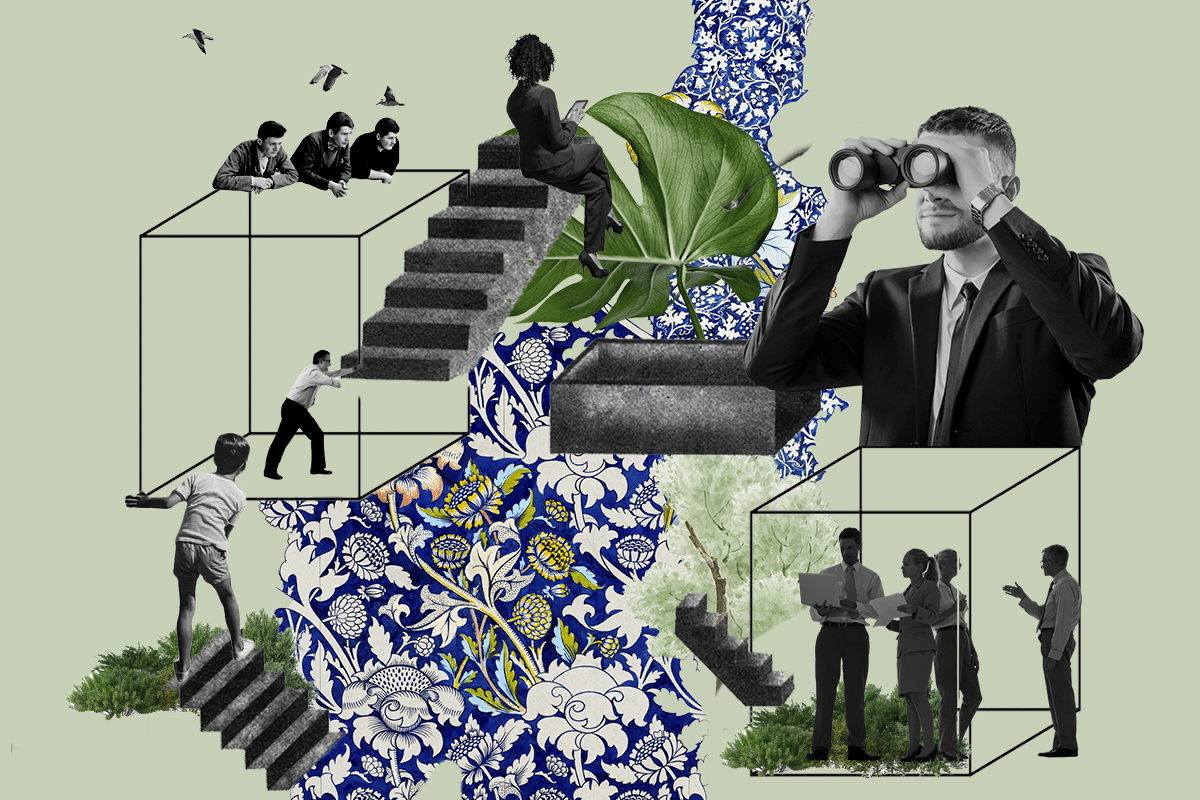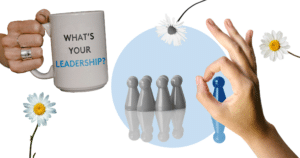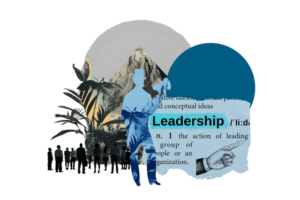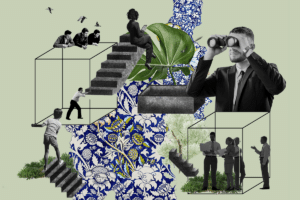When we think about the factors that can determine the success or failure of an organization, we often consider efficiency, productivity, speed, and the talent of employees. These elements, while relevant, may not be enough. What is increasingly important is to create bonds between people through a relational infrastructure, to increase engagement, motivation, and a sense of belonging. All organizations have ambitions to grow and last over time. Is it relationship skills that make the difference?
Over the past 10 years, coming into close contact with hundreds of organizations and several hundred Managers, I have verified that certain situations I experienced in earlier years, when I was a Manager, are nowadays more prevalent than I thought.
I summarize them with numbers from the Gallup State of the Global Workplace – 2023 report:
- Low motivation and resulting low employee engagement cost the global economy $8.8 trillion (9% of global GDP)
- 34% of the corporate population is actively looking for a new job
In Europe, the situation is among the worst:
- 72% of workers feel disconnected from the organization and their bosses: they do the bare minimum, but feel more stressed than more motivated workers (quiet quitting phenomenon)
- 15% of workers are highly unmotivated and in conflict with the organization, which is devalued along with the importance of results; the trust relationship is broken and sometimes actions are taken that harm the organization (loud quitting)
Instead, only 13 percent of workers feel motivated, connected to the organization, and find their work meaningful.
In a world where innovation and results emerge from the interdependence and cohesion of work groups, collaborative relationships are one of the greatest struggles in such a context.
What would be the economic return if managers knew how to take care of the relational infrastructure of their organizations? Unfortunately, few have training and experience on these issues, which are complex and require an investment of time and energy. The numbers show that the potential economic return would be immense as would be the social one. Can we afford a world in which work-related stress and anger are prevalent at 44% and 21%, respectively?
From “people at the center” … to “relationships at the center”
Almost all companies have somewhere among their slogans and values the concept of “people at the center.” I propose that organizations should continue to pay attention to people and, at the same time, create a solid relational infrastructure: a structure of connections consisting of reciprocal relationships among employees; it is not about having “good relationships,” “loving each other,” or being friends. I am referring to professional, adult, equal, and common-purpose-oriented relationships that can make the organization cohesive and free from power plays, psychological games, and other conscious or unconscious boycotts. If people disinvest or leave organizations so easily, it means that the ties that connect them to the organization are weak or of poor quality.
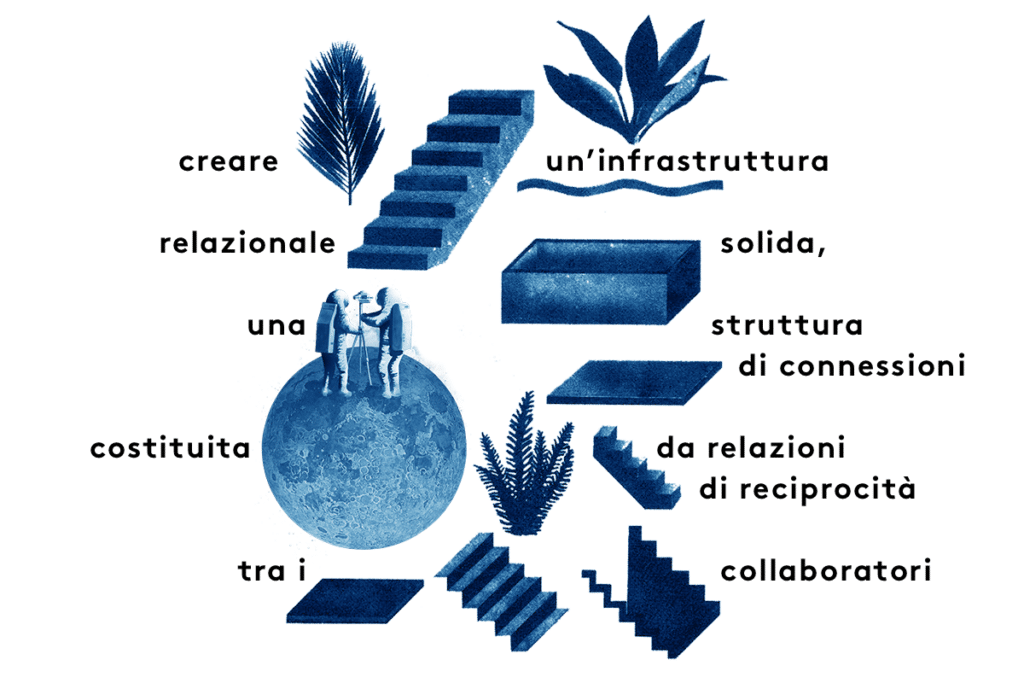
I often hear people say that professional relationships are weakening because, due to the rise of “hybrid work,” you are no longer all in the same office. You communicate less “because maybe you used to meet people in the hallways or on coffee breaks and so you would align and inform each other…” In these statements, it seems to me that causes are confused with effect. Perhaps the problem is precisely that if professional communications and relationships depend on the randomness of meeting colleagues around the hallways, there is probably not a solid relational infrastructure and established communication processes.
Presence and distance are psychological and emotional concepts, as well as physical: we can have a person in the room and feel them absent and distant or have a person on videocall on the other side of the world and feel them present and close. It is mental and emotional presence and closeness, psychological safety, empathy, feedback, a sense of interdependence, respect, trust, and mutual recognition that nurture professional relationships, not just mere physical presence and closeness.
Informal and in-person communications and relationships are important and have their function as do strong professional relationships to cooperate and co-create toward a shared purpose (M. Korpiun, 2021): these constitute the connective tissues that hold organizations together and make them strong.
From managerial development to relational organizational development
Just as the hardness of a material depends on the intensity of the bonds between the atoms rather than the solidity of the atoms themselves, organizations are also solid when the bonds, the connections between the individuals within them, are solid.
That is why in recent years I have increasingly applied a relational approach to managerial and organizational development, designing interventions that act on the individual-organization relationship, two interdependent realities that are a prerequisite for individual and organizational performance, development, and learning.
On the other hand, the human being is a relational entity that develops in relationship with the other, and therefore development intervention is the more effective the more it allows the individual to establish this relationship of growth and learning in interaction with the organization.
Many companies implement dozens or hundreds of individual development pathways for their managers and sometimes even for their work teams. How much more powerful could the investment be if action were also taken on developing the connections between these individuals and these teams and between them and the rest of the organization? We need to create the mindset, the maps, and the tools so that people know how to take care of the network of relationships.
The process of relationship development is strategic in that individuals who may sooner or later leave the organization, but the relational infrastructure remains an asset of the organization that allows it to continue to develop independently and, for individuals, allows them to continue to grow and develop in those relationships.
Moreover, if the organization is characterized by a cohesive and quality network of relationships, individuals are unlikely to think about leaving because, in addition to financial support, they perceive their own continued growth as well as receiving and returning emotional and psychological nourishment.
Relational infrastructure and longevity of organizations
The pattern and quality of interactions within organizations contribute more significantly to high performance than the personalities, experience, skills, and individual intelligence of organizational members combined.
Research conducted on nearly 200 successful ultra centennial enterprises in Italy (Cugno, Buchi, 2015), highlighted how “the proper management of relational aspects profoundly affects the physiology of the business reality, conditioning the economic viability and durability itself. Very often organizations thrive and fail more for human and social reasons than for strictly economic ones.”
In other words, research conducted by economists has pointed to success factors that are in the area of humanistic, social, and relational skills.
The robust relational infrastructure of these firms is one of the characteristics that has enabled them to survive two world wars, recessions, global crises, and contextual and technological changes. It has also ensured continuity across generations, as well as innovation and evolution of their products and services through relationships with the local area, the international context, customers, and stakeholders.
When we consider that the average lifespan of enterprises is around 12 years and 30% does not exceed 6, there are good reasons to start working on the relational infrastructure of organizations as a foundation on which to build enterprises that can be robust, innovative, sustainable, and long-lived. Enterprises that can be places of growth, innovation, and motivation for people, that can thrive economically and have a positive impact socially.
